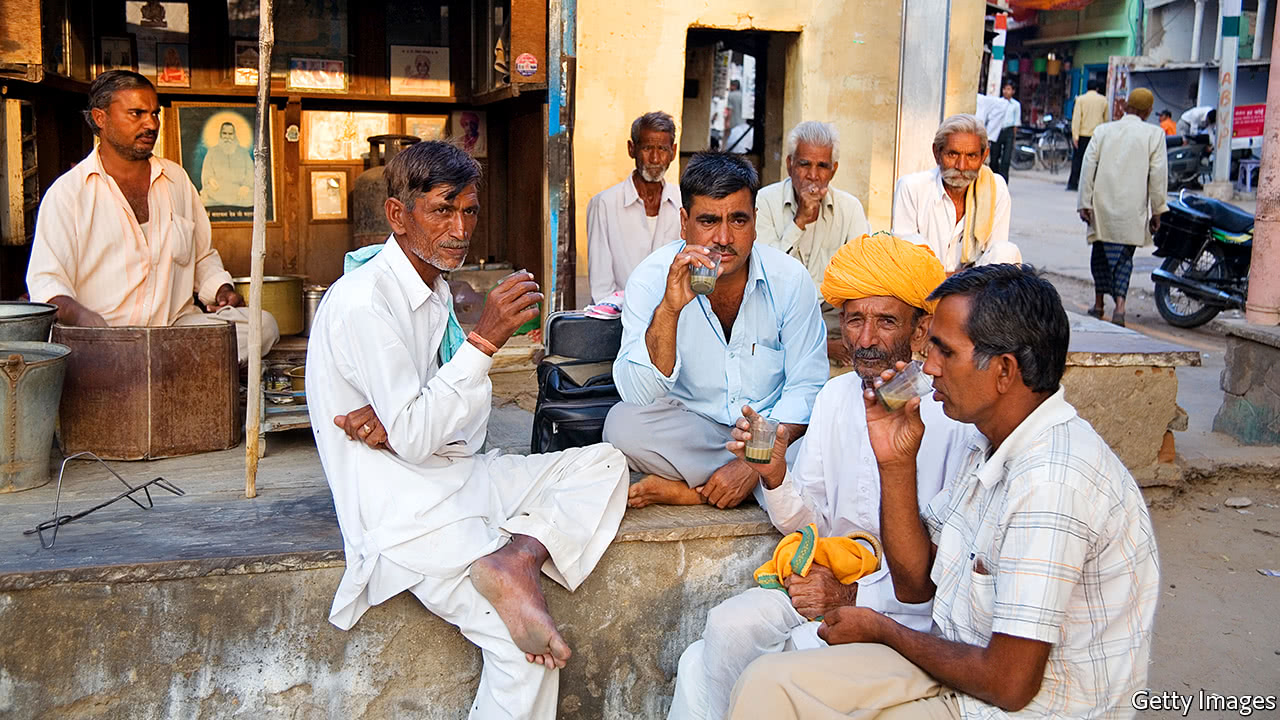Outdated government regulations and millennials’ impatience bode ill for plantations

BULK tea sales at the offices of J Thomas in Kolkata, which first started auctioning the stuff in 1861, lack the boisterousness of years past. Gone is the noisy trading pit, replaced by a handful of buyers sitting behind their laptops in a silent auditorium. Armed with tasting notes, they bid electronically on hundreds of lots drawn from the city’s hilly hinterlands in Assam and West Bengal. To passing visitors, it appears as if everyone in the room could do with a little caffeination. Yet within only three hours or so, enough tea changes hands to brew 24 Olympic-sized swimming pools.
If Indian tea delights those who get to drink the country’s finest blends, it frustrates all those who plant, pluck and peddle it. Archaic government regulations have in recent years pushed up production costs to around 175 rupees ($2.70) per kilogram, well above average auction prices of 140 rupees, which makes large cultivators grumble. Pickers complain about working conditions. Marketers fret over whether young people around the world thirst for tea as their parents do.
For now, tea remains the most popular drink in the world after water. Around 40% of global production of black tea comes from India (China also grows the stuff but specialises in green tea, which uses the same species of plant but processes it differently). Many of the firms in the business can trace their heritage to well before Indian independence in 1947.
Back then four out of five lots used to end up abroad; now the same proportion is drunk locally. That is due as much to sluggish exports as to rising domestic demand. Tea drinking in India has grown by less than 3% a year since 2012, and foreign sales have barely risen in 70 years; in some rich export markets they are shrinking. On the world scene India is behind Sri Lanka and Kenya, both relative newcomers.
Government meddling, in the form of onerous, outdated rules, is mostly to blame for the industry’s worsening fortunes (although producers do also benefit from protection from imports). Regulations from the 1950s have heaped paternalistic obligations onto owners of large tea plantations. These mandate the number of workers and provide their families with schools, health care, subsidised food, electricity and so on. Labour now accounts for around half of production costs, a figure which has grown by 12% a year over the past three years. Despite that, few workers make more than $2 a day on top of their housing cost and other benefits, and child labour is rife—hence widespread discontent with conditions.
Over time, new processing techniques have raised output, to 1.25m tons last year, but at the expense of quality. Tea leaves are now shredded into tiny bits, which generate lots of flavour but less of the subtlety for which Indian tea has been prized abroad (Indians boil rather than brew their tea and so tend to make do with lower-quality leaves). Improvised small-time growers, some of them with barely a few plants, have sprouted, further denting quality. With much lower costs, given they carry none of the social obligations of large plantations, these small producers now make up nearly half the market, from barely nothing at the turn of the century.
Traditional producers have tried to find ways to adapt. Giants like Hindustan Unilever or Tata have focused on marketing and selling the stuff to tea-drinkers rather than just growing it and selling it wholesale. Others have invested heavily abroad; McLeod Russel, the world’s biggest producer, last year made enough profits in Uganda, Vietnam and Rwanda to offset losses in India. Another large producer, Rossell India, has diversified into kebab shops and making military kit.
Many would like to use their tea land for other purposes, but this is forbidden by government regulation. The resulting overproduction of lower-quality tea has depressed prices and profits (though a bad harvest in Kenya has recently nudged up prices). It also bodes ill for future exports. According to ICRA, a credit-rating agency, the country’s nine biggest planters combined made no profit in the most recent financial year, ending in March 2017. Few producers are making the investments that are needed to raise productivity by uprooting old bushes and planting new ones.
Tea marketers’ hope is to nudge consumers both in India and abroad to slurp pricier brews, moving them from loose tea to tea bags, canned iced tea or premium blends. Their plan is in its early stages, and a short-term setback came this summer when a three-month agitation by local separatists in the Darjeeling area of West Bengal, which grows what is considered the country’s finest tea, resulted in perhaps 40% of the year’s revenue being lost.
Yet the biggest gripe in the industry is not to do with prices, quality or even heavy-handed regulation. Customers, especially millennials, increasingly lack the patience to make a proper cup of tea, laments Krishan Katyal, the boss of J Thomas. The leaves need at least three minutes to release their complex aromas, beyond an eternity for youngsters these days. Like a master distiller told of a single malt being mixed with Coca-Cola, he winces at the thought of drinkers squeezing their tea bag after merely a few seconds. “That poor thing,” he says. “It never got a chance.”
No comments:
Post a Comment
Note: Only a member of this blog may post a comment.